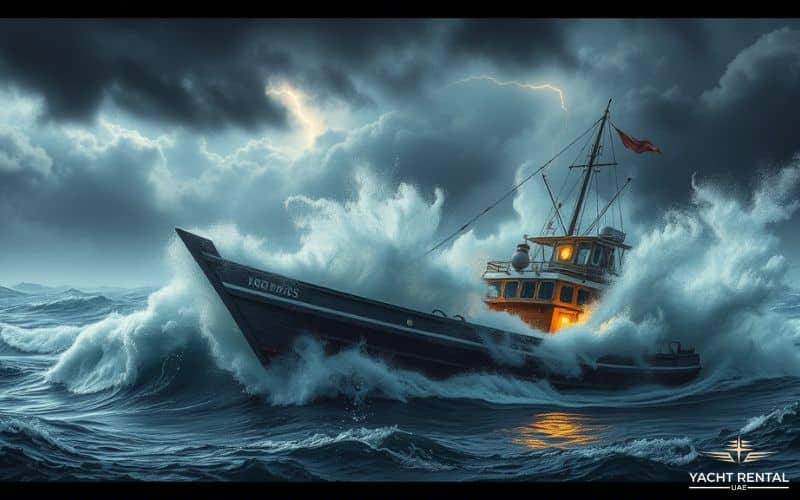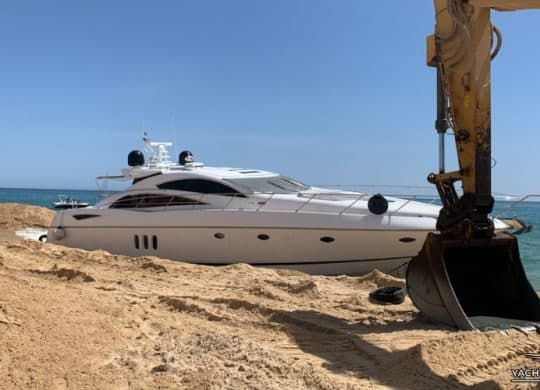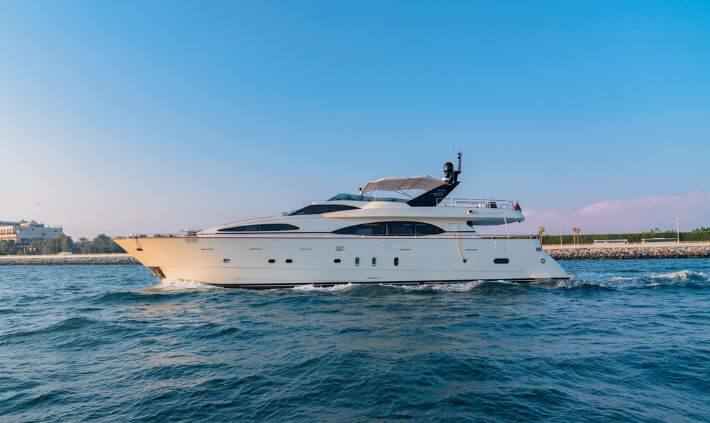Recognize the Signs of an Approaching Storm
Weather conditions can change fast on the water. Watch for these warning signs that suggest a storm is coming:
- Sudden, darkening clouds forming on the horizon
- High winds causing choppy water or whitecaps
- Quick drops in temperature or sudden rainfall
- The sound of distant thunder or changes in wind patterns
- Rapidly falling barometric pressure on boat instruments
Most storms give some warning before they hit. Learning to spot these signs gives you precious time to prepare. Keep watching the sky in all directions, especially during summer afternoons when storms often develop quickly.
Immediate Actions to Take When Storm Hits
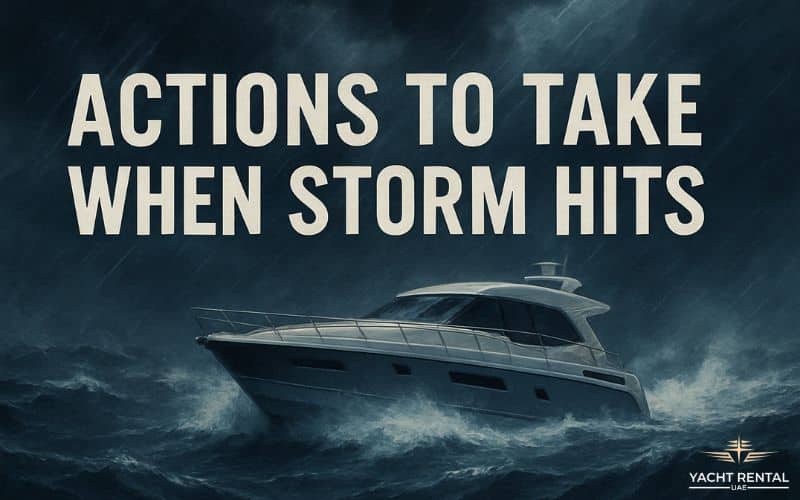
- Stay Calm and Assess.
- Secure the Boat
- Move to a Shelter or a Safe Area
Stay Calm and Assess
When a storm hits, your first step is staying calm. Panic leads to poor decisions and mistakes that might worsen your situation. Take deep breaths and focus on immediate safety needs. Check your boat’s position and look for landmarks to understand where you are and what direction you are heading.
Assess the storm’s direction and strength to help plan your next steps. Look at wave patterns and cloud movement to determine which way the storm is traveling. This information helps you decide whether to seek shelter or ride out the weather where you are.
Secure the Boat
Quick action can prevent damage and injuries. Start by tying down or storing loose items that could become dangerous projectiles in high winds. Make sure everyone on board puts on life jackets immediately – no exceptions.
Reduce wind resistance by folding or lowering sails if you’re in a sailboat. In powerboats, maintain just enough speed to keep control of steering. Turn on all navigation lights regardless of the time of day, and make sure your radio is working for emergency communications.
Move to a Shelter or a Safe Area
If possible, head toward sheltered water like a protected bay, the lee side of an island, or a harbor. Moving closer to shore might help, but be careful of shallow areas where waves can become more dangerous. Stay away from open water where waves build higher, and wind effects are stronger.
Avoid narrow channels during storms, as currents can increase dramatically in these areas. Position your boat to face oncoming waves at a 45-degree angle, as this helps prevent capsizing and provides better stability. If lightning is present, stay low in the boat and avoid touching metal objects or electronic equipment.
Also Read: Your Boat Capsizes But Remains Afloat – What Should You Do
Best Practices Before and During a Storm
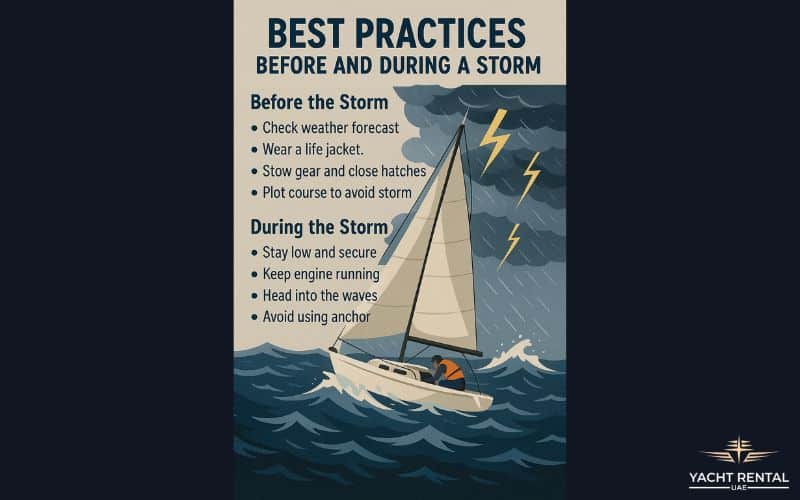
Smart preparation makes storm handling easier. Check weather updates daily before trips and know the forecast for your entire planned journey. Install and test weather alert apps on your phone when cell service is available. Equip your boat with these essential safety items:
- Life jackets for everyone (worn, not stored)
- Waterproof emergency flares
- Marine radio with weather channels
- Working flashlights with extra batteries
- First aid kit and emergency water
Create and practice an emergency plan with all crew members before leaving shore. Everyone should know their job during a crisis, from securing gear to radio operations.
During the Storm
Keep everyone on board the boat unless it is necessary to evacuate. People in the water during storms face much higher risks than those who stay with the vessel. Use your marine radio to keep in touch with coast guard or rescue teams if needed, providing your location and situation updates.
Monitor weather conditions constantly for changes. Some storms pass quickly, while others develop into more serious systems. If your boat has a cabin, keep people inside for protection from waves and lightning. Track your position using GPS or landmarks to avoid drifting into dangerous areas.
After the Storm Passes
Once the storm moves away, inspect your boat thoroughly before resuming your journey. Check for hull damage, water leaks, or structural problems that might have developed during rough conditions. Examine electrical systems, especially after lightning, to ensure everything works properly.
Confirm the weather is truly clear before moving on. Some storms have calm “eyes” followed by more bad weather, while others travel in groups. Use your radio or weather apps to check that conditions will remain stable. If your boat suffered damage, consider calling for assistance rather than risking further travel.
Stay Alert for Aftereffects
Even after storms pass, water conditions might remain dangerous. Watch for unpredictable waves or strong currents that continue after the wind dies down. Floating debris from shorelines or other boats can create hazards in previously safe areas.
Keep communication lines open until you are safely back to your destination. Let someone on shore know your status and planned route. If you need help, contact rescue services immediately rather than waiting until problems become worse. Coast Guard statistics show that delayed calls for help often lead to more serious outcomes.
Final Words
Storms on water create serious dangers, but staying safe is possible with proper action. Weather awareness, quick response, and good decision-making significantly improve your chances of coming through a storm without harm. Remember to prepare before leaving shore, stay alert while boating, and take immediate steps when conditions change.
Always prioritize human safety over property or schedules. Following these safety steps protects you and your crew during difficult weather. With practice and preparation, you can handle unexpected storms confidently and return safely to shore.

